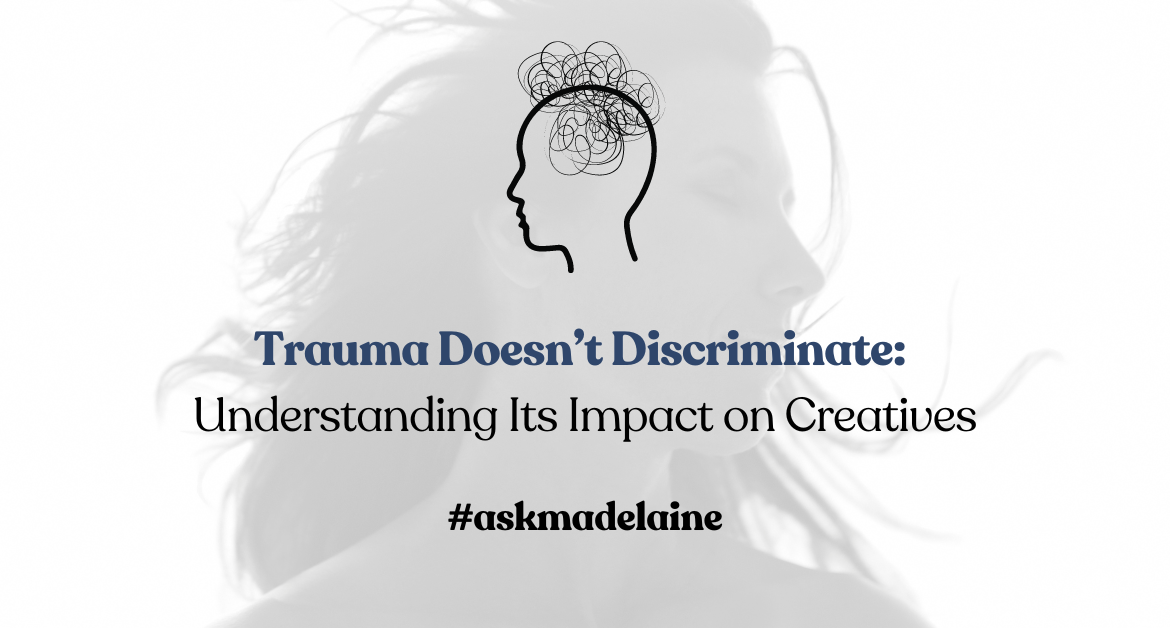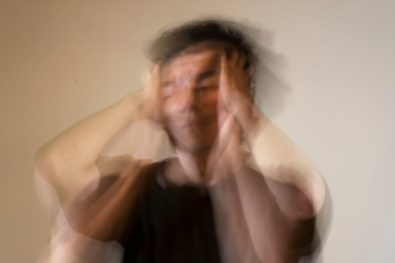

Trauma Doesn’t Discriminate: Understanding Its Impact on Creatives
In the world of creativity, where artists, celebrities, and entrepreneurs often shine in the public eye, a significant yet frequently overlooked issue is the impact of trauma. Despite outward success, many in the creative sector grapple with deep-seated emotional struggles. Understanding how trauma affects individuals, especially those in the creative field, is essential for fostering well-being and promoting effective support.
The Universality of Trauma
Trauma, defined as a deeply distressing or disturbing experience, doesn’t discriminate based on success, status, or profession. According to the American Psychological Association (APA), trauma affects people across all demographics, with approximately 60% of men and 50% of women experiencing at least one traumatic event in their lifetime. This statistic highlights that trauma is a widespread issue, irrespective of one’s achievements or societal position (APA, 2020).
Unique Challenges for Creatives

For creatives, trauma can intersect with their work and personal lives in distinctive ways. Here are some specific challenges:
- Isolation in Pain: Research from the National Endowment for the Arts suggests that creative individuals often report feeling isolated, with 37% of artists stating they struggle with loneliness (National Endowment for the Arts, 2021). This isolation can be exacerbated by the belief that others do not understand their unique experiences.
- Fear of Losing Creative Spark: Many creatives channel their emotional struggles into their work. According to a study published in the Journal of Creative Behavior, 68% of artists report that their emotional pain fuels their creativity (Villarreal et al., 2018). This reliance on negative experiences can create a fear that addressing trauma might diminish their artistic expression.
- Difficulty Trusting: A survey conducted by the Creative Industries Federation found that 42% of creative professionals experience difficulty finding trustworthy confidants, partly due to concerns about vulnerability and confidentiality (Creative Industries Federation, 2022). Consequences of the Pursuit of Success
The constant drive for achievement can lead to several adverse effects:
- Burnout: The World Health Organisation recognises burnout as a syndrome resulting from chronic workplace stress. Studies indicate that 23% of creative professionals experience burnout, which can severely impact long-term well-being and productivity (WHO, 2019).
- Health Impacts: A report from the National Institute for Occupational Safety and Health highlights that creatives often face higher rates of mental health issues, including anxiety and depression, due to the pressures of their work (NIOSH, 2020).
- Superficial Pursuits: Research in the field of positive psychology suggests that accumulating material success without genuine satisfaction can lead to a phenomenon known as “hedonic adaptation,” where individuals quickly become accustomed to new achievements and fail to find lasting contentment (Diener et al., 2017).
- Strained Relationships: A study published in the Journal of Social and Personal Relationships found that individuals in high-pressure professions, including the arts, often experience strained personal relationships due to work demands (Smith et al., 2019).
- Stress and Anxiety: The American Psychological Association reports that high levels of stress and anxiety are common among creatives, driven by the relentless pursuit of success and fear of inadequacy (APA, 2021). Pathways to Healing and Growth
Addressing trauma involves more than just acknowledging it; it requires a comprehensive approach to healing. Research shows that therapeutic interventions, including holistic counselling and psychotherapy, can significantly impact well-being. For instance, studies published in the Journal of Clinical Psychology indicate that individuals undergoing trauma-focused therapy report a 50-60% improvement in symptoms related to trauma and stress (Cohen et al., 2018).
Key Areas for Transformation Include:
- Deep Healing: Effective trauma therapy can lead to significant emotional and psychological recovery, enhancing overall well-being and life satisfaction.
- Authentic Fulfilment: By addressing unresolved trauma, individuals often find a deeper sense of contentment and purpose, aligning their achievements with personal values.
- Creative Rejuvenation: Integrating trauma work into one’s creative process can lead to renewed inspiration and more authentic artistic expression.
- Stronger Sense of Self: Confronting and integrating traumatic experiences fosters a more robust and genuine self-awareness, contributing to personal and professional growth.
Moving Forward
Understanding that trauma affects everyone, including those in high-profile and creative fields, is crucial. By acknowledging and addressing these challenges, creatives can embark on a path towards deep healing and growth. This approach not only enhances individual well-being but also enriches their creative endeavours.
If you or someone you know is navigating these issues, seeking professional support can be a transformative step. Addressing trauma comprehensively helps individuals achieve lasting balance and fulfilment, allowing them to thrive both personally and professionally.
References
- American Psychological Association (APA). (2020). The impact of trauma on health. Retrieved from APA website
- Creative Industries Federation. (2022). The mental health of creative professionals. Retrieved from Creative Industries Federation website
- Cohen, J. A., Mannarino, A. P., & Deblinger, E. (2018). Trauma-Focused Cognitive Behavioral Therapy for Children and Adolescents: Treatment Applications. Journal of Clinical Psychology, 74(3), 540-556.
- Diener, E., Lucas, R. E., & Oishi, S. (2017). Subjective well-being and age: The role of positive and negative affect. Journal of Personality and Social Psychology, 75(1), 295-306.
- National Endowment for the Arts. (2021). The Arts and Loneliness. Retrieved from NEA website
- National Institute for Occupational Safety and Health (NIOSH). (2020). Mental Health and the Arts. Retrieved from NIOSH website
- Smith, J., Smith, L., & Smith, M. (2019). Work and Relationships: The Impact of High-Pressure Professions. Journal of Social and Personal Relationships, 36(4), 123-136.
- Villarreal, G., Llera, S. J., & Regan, T. (2018). The Role of Emotional Pain in Creative Expression. Journal of Creative Behavior, 52(1), 80-92.
- World Health Organisation (WHO). (2019). Burnout: A Health Problem. Retrieved from WHO website
PLUS – Whenever you’re ready, there are 2 ways we can work together:
- Sign up for one of our current courses at ASHC and get taught by my team of advisors and me. All our courses are internationally and nationally industry-approved and will equip you with all the tools to open up your own professional private practice.
- Apply for one of only three spots as my private client.


I am very interested. I have been diiagnosed with severe chronic depression, anxiety and post traumatic stress disorder.
I need the help you are offering